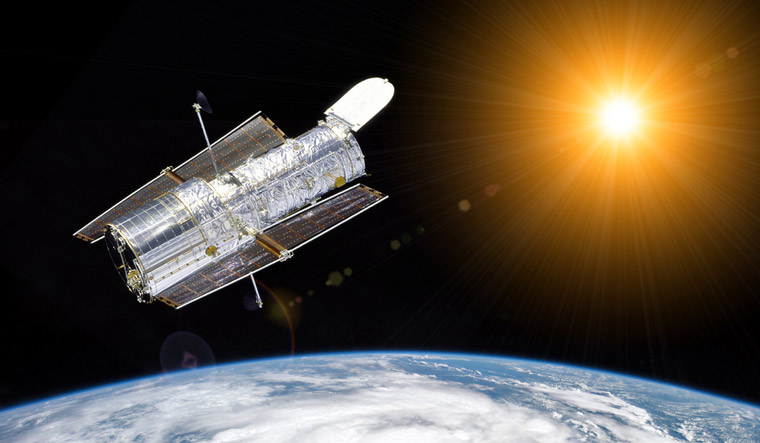
NASA's Hubble Space Telescope, soon to be thirty years old, never fails to surprise with its findings. Its most recent observations revealed heavy metals like iron and magnesium gas escaping the atmosphere of exoplanet WASP-121b—the first time such a phenomenon has been observed on an exoplanet.
The presence of heavy metals makes the discovery valuable as they are difficult to detect in considerable quantities, as opposed to the lighter and more abundant elements in the universe like hydrogen and helium.
Part of the PANCET (Panchromatic Comparative Exoplanet Treasury) survey, the WASP-121b study is part of the project to look at 20 exoplanets of extremely large sizes as compared to the earth in varied wavelengths like ultraviolet, visible and infrared.
At 900 light years away from the earth, the planet with an upper atmospheric temperature of 4600 degrees Fahrenheit aids the unusual escape of heavy metal gases. Its incredible size and gaseous nature like the 'gas giant' Jupiter closer home in the solar system, along with its close location to the star it orbits gives it the epithet 'hot Jupiter'.
The presence of clearly detectable quantities of heavy metal gases in the upper atmosphere came as a surprise to the researchers. Though hot Jupiters have shown the presence of heavy metals before, unlike the case of WASP-121b, they have usually been detected in the lower atmosphere.
What makes it interesting is really its extremity which makes it easier to detect the heavy metals. The close proximity to the star it orbits makes it so hot that its atmosphere sees constant denudation, with its shape turning into that of a football under the influence of the strong gravitational pull of the star. WASP-121b first rose to fame in 2017 when Hubble made a similarly intriguing discovery about it—it had a warm stratosphere much like the planets in our own solar system.
Apart from adding to our general understanding of exoplanets, it helps us glean the growth and decay of their atmospheres in response to their changing distances from the star they orbit. A better grasp of the constitution of the atmospheres of exoplanets like WASP 121b is expected to be achieved with the launch of the James Webb Space Telescope (JWST), which will aid Hubble's own quest in this direction.

No comments:
Post a Comment